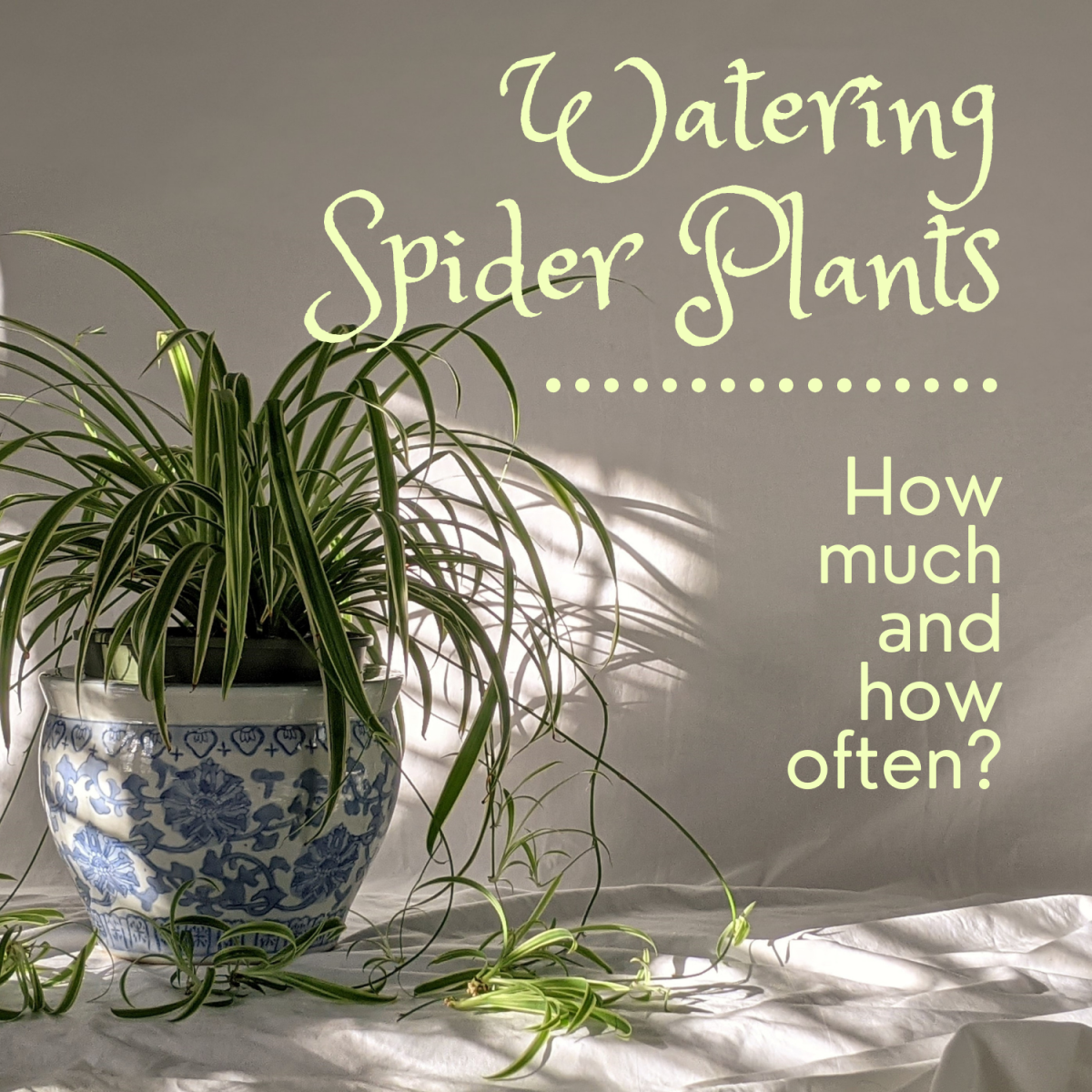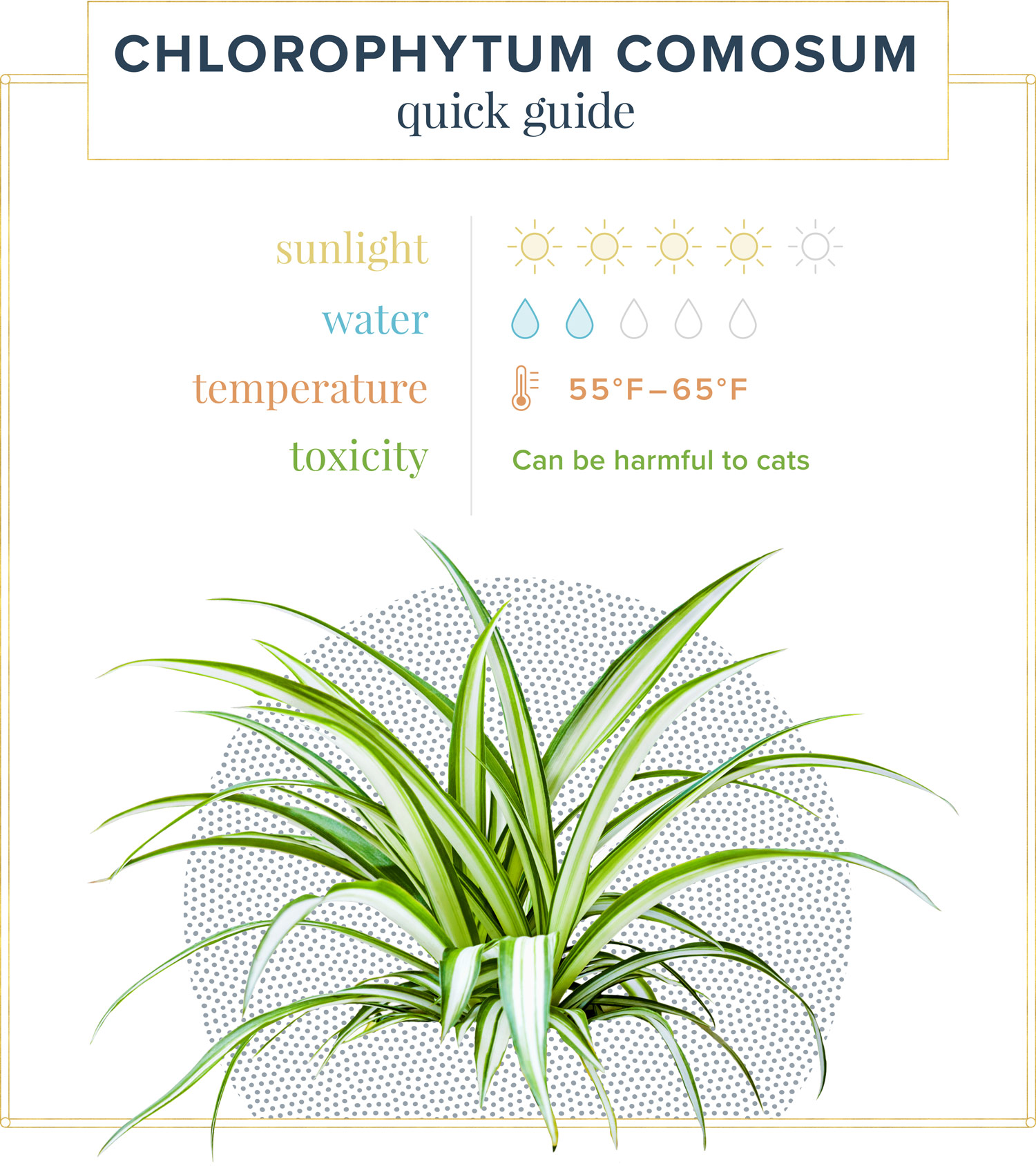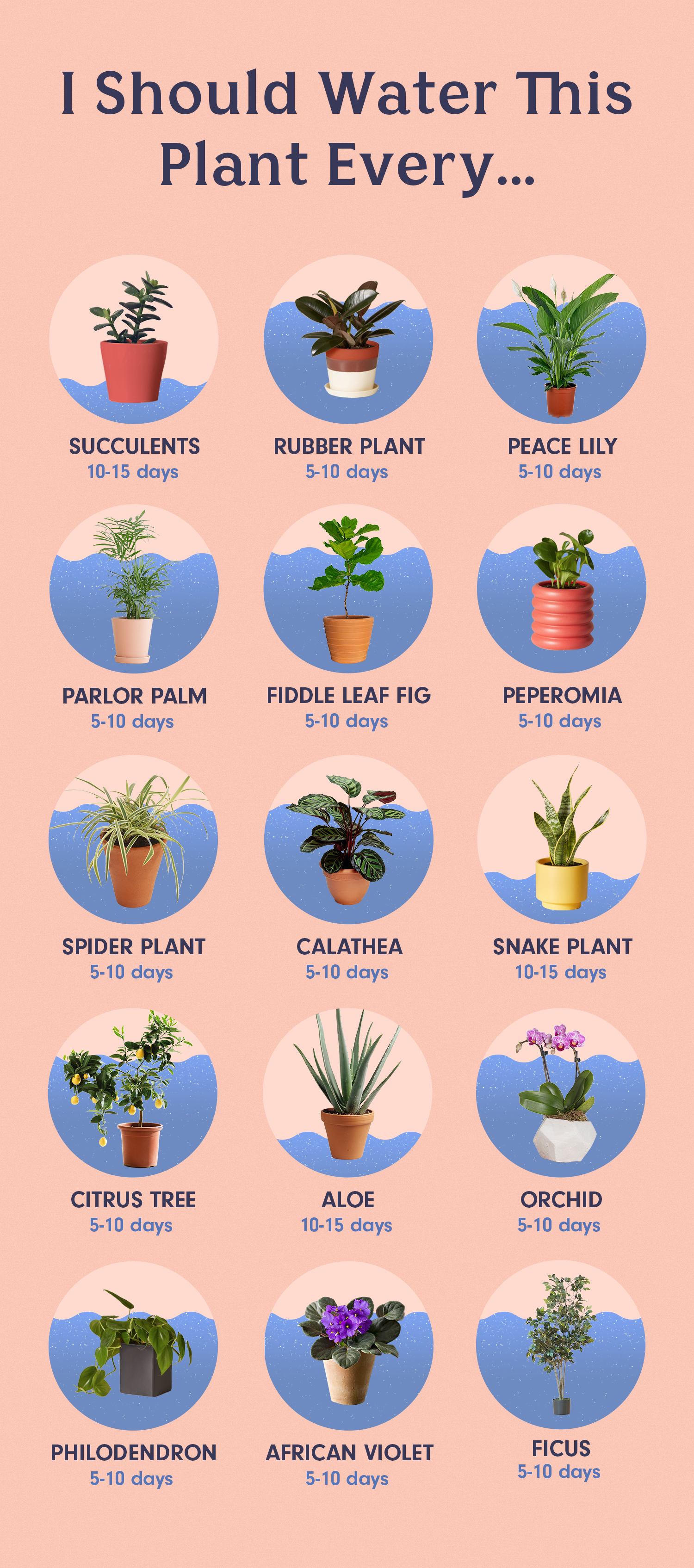
When the top inch of soil seems dry, give spider plants a good soak in rainwater. Always water thoroughly so that any extra water drips out of the drainage holes in the pot’s base. Regularly misting the leaves with water can promote humidity.
The spider plant’s hydration needs are addressed while avoiding issues related to overwatering, such as root rot, by allowing the top inch of soil to dry between bouts of watering.
Continue reading to find out how much water to give spider plants in the winter, why rainwater is preferable to tap water for watering, and how to create the ideal watering schedule for spider plants and spider plantlets that have been propagated.
Table of Contents
How Often to Water Spider Plants
Native to Southern Africa, spider plants are tropical plants that flourish in soil that is equally moist to moderately dry and has a high relative humidity.
Since its natural habitat can be dry and hot, spider plants have developed particular adaptations to deal with drought stress. For example, they store water in their fleshy, white, deep roots and rhizomes, which allows them to withstand some neglect when growing inside your home.
It’s crucial to mimic native soil moisture levels and watering practices while caring for spider plants to ensure success.
Spider plants need soil that is consistently moist, with the top inch just drying out between waterings. According to your climate and the conditions in your home, this usually involves watering spider plants once every seven to ten days.
This watering cycle provides the spider plant with the hydration it needs without watering it excessively, which can lead to root rot.
It is important to keep in mind that the frequency of watering spider plants relies on a number of variables, including:
- the humidity in your environment and the house.
- How big the pot is (smaller pots dry out much quicker).
- Whether the spider plant is directly exposed to forced air, draughty sections of the house, or air currents from air conditioning.
- the soil’s ability to hold onto moisture after being watered.
Feel the top inch of soil to determine how frequently you should water your spider plant in the conditions of your home. Delay watering if the soil feels damp or is still wet. This is the ideal time to water with a generous soak if the top inch seems a touch dry and there isn’t much moisture present.
You may create a watering schedule that faithfully replicates the regular watering and soil moisture conditions of the spider plant’s native environment after you know how long it typically takes for the top inch of the soil to dry out from your spider plant.
Top Tips For Watering Spider Plants
- When feasible, try to hydrate spider plants using rainwater or filtered water. Chlorine and fluoride, which are both present in tap water, can cause the ends of spider plants’ leaves to become brown, and they are particularly sensitive to these chemicals. While sometimes watering a spider plant with tap water won’t cause any serious harm, it’s recommended to use rainwater or filtered water to keep it healthy.
- Regularly mist your spider plants. Native to regions with moderate humidity, spider plants. At least once a week, mist your spider plant’s leaves with water to simulate the humidity of its natural habitat. If you live somewhere with an extremely dry climate, spray more frequently. Due to low humidity, the tips of the leaves are showing signs of stress by turning brown.
- A spider plant can dry out too soon if it is placed in the direct line of air currents or close to any sources of heat.
- temperature at which plants can grow best. Although they can withstand a broad variety of temperatures, spider plants thrive in the range of 65°F (18°C) to 75°F (23°C) during the day and 55°F at night. When the temperature inside your home rises beyond 80°F (27°C), drought stress can cause spider leaves to turn brown; in this situation, you should water more frequently and frequently mist the leaves to prevent this.
- the pot’s size. The finest pots for spider plants are those that are just a little bit bigger than the root ball, as this is supposed to promote the plant to produce plant-lets for reproduction and usually permits the soil to dry out at the ideal rate.
(Read my post on how to revive a dying spider plant to identify the cause and learn how to fix it.) The ends of spider leaves can turn brown or yellow for a variety of causes.
How Often to Water Spider Plants in Winter
Even when grown indoors, spider plants’ needs for moisture might change with the seasons.
Spider plants enter a condition of dormancy over Winter in response to less hours of light and decreased light intensity. This implies that compared to their aggressive growth in the Spring and Summer, spider plants often need to be watered less frequently.
If you don’t lessen the frequency of your watering, cooler temperatures may also slow down how quickly the soil and plant dries out, which may increase the danger of root rot.
In reaction to fewer sunlight hours, spider plants typically need to be watered once every two or even three weeks in the winter to maintain the necessary moisture levels and prevent root rot.
However, a few factors might have a big impact on how frequently you should water spider plants in the winter.
Due to sources of heat like radiators, fires, and forced air, which reduce humidity and hasten soil drying, the temperature in our houses can vary greatly during the winter.
In order to combat the drying effects of indoor heating, you should increase how frequently you water and mist your spider plants if you observe the tips of their leaves becoming brown. This is a sign of drought stress.
You are watering your spider plant too frequently if the leaves become yellow or black.
Because spider plants are resilient, they should be able to recover from periods of overwatering or underwatering in the winter as long as the top inch or so of the soil dries out between waterings.
How Often to Water Spider Plantlets from Propagation

Small plantlets are more vulnerable to drought because their root systems are less well formed.
In contrast to the parent plant, which can store water in its large, fleshy white roots and rhizomes and can withstand considerably dryer circumstances, it is crucial to irrigate the plantlets more frequently.
Since the plantlets are getting their much-needed moisture from the top inch of soil, you can check the soil’s moisture by using your finger to measure its level.
Your plantlet should be able to grow roots as long as the soil is kept continuously moist and does not dry up.
Always give the soil a deep soak rather than a gentle misting, since this fosters root growth and development and results in more equally moist soil, which can support a much larger plant.
How Much to Water Spider Plants

The amount of water should remain constant, despite the fact that various factors, like climate, temperature, and humidity, might affect how frequently to water spider plants.
Give spider plants a good soak in water, allowing any extra to drip out the pot’s base.
By watering in this manner, the soil is ensured to have received the water necessary for the roots to absorb.
Additionally, a truly liberal soak helps the roots develop and extend deeper into the soil, increasing their capacity to store water and the spider plant’s tolerance to drought.
When you water your spider plant too little, the water only reaches the top inch or two of the soil, not the roots where it is needed. As a result, the leaf tips start to turn brown and show signs of drought stress.
(Read my essay on the spider plant’s slow growth and lack of offspring.)
Key Takeaways:
- Give spider plants a good soak, letting any extra water drain out the bottom of the pot. To satisfy the moisture needs of spider plants and prevent root rot, wait until the top inch of soil is dry before watering.
- In order to replicate the humidity found in its natural habitat, mist spider plants frequently.
- Make sure that the soil is kept consistently moist so that spider plantlets can grow roots.
- Always give spider plants a good soak while watering to encourage strong root development.
